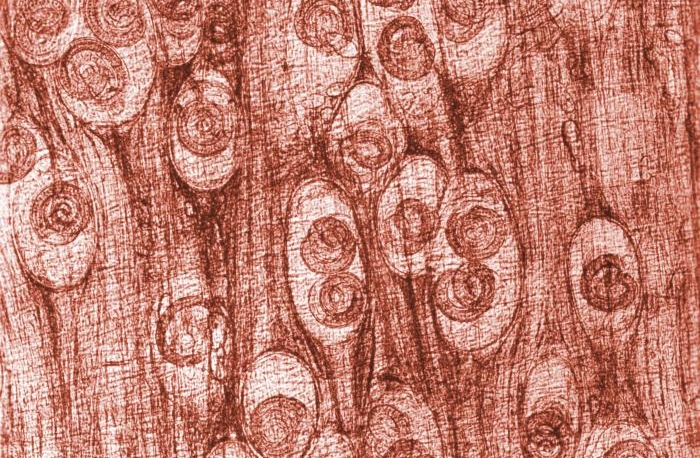With two concurrent university-based outbreaks, meningitis is all over the health news. But what exactly is meningitis and why are we so worried about these particular outbreaks when other diseases are creeping up on us during these winter months?
Let’s start with the basics. Meningitis refers to inflammation in the protective membranes covering the brain and spinal cord called the meninges. The inflammation typically is triggered by an infection in the fluid surrounding the spinal cord and brain. However meningitis can develop as a response to a number of potential causes. The Centers for Disease Control and Prevention (CDC) splits the causes into five main sub-categories: bacterial, viral, fungal, parasitic, and non-infectious.
Bacterial: Most often severe, bacterial meningitis is responsible for approximately 170,000 deaths worldwide each year. According to the CDC, from 2003 to 2007, an average of 4,100 cases per year were reported in the United States. The disease can cause serious, long-term problems such as hearing loss, brain damage and learning disabilities. Multiple types of bacteria can cause meningitis and each pathogen targets a general age group or groups. For example, Group B Streptococcus is a common cause of meningitis in newborns while Streptococcus pneumoniae causes it in children and adults. Those at greater risk for bacterial meningitis include infants, those living in community settings, immuno-compromised individuals, and those traveling to Sub-Saharan Africa, specifically, the countries that fall in the “meningitis belt” (from Senegal to Ethiopia).
Viral: Meningitis caused by viruses is more common and less severe than bacterial meningitis. These infections typically clear up without specific treatment. The most common cause of viral meningitis in the United States are enteroviruses, though meningitis can also be caused by the mumps virus, herpesvirus, measles virus, and influenza virus, among others. Enterovirus is typically spread from person to person through fecal contamination from changing a diaper or using the bathroom without washing hands after.
Fungal: This type of meningitis can develop when fungal spores, typically inhaled, spread through the bloodstream. Alternatively it can be caused by a medicine, such as certain steroids, that weakens the immune system (this happened in the United States in 2012). Fungal meningitis is not contagious and quite rare. Having a weak immune system or living in certain geographic regions increase risk of infection with certain fungi. For example, the fungus coccidioides is found in soil in southwestern states. Fungal meningitis can be treated by antifungal medications, and must often be treated in a hospital setting.
Parasitic: Parasitic meningitis is extremely rare and non contagious. Parasites contaminating food, soil or water can enter the body and cause meningitis. It is less common in developed countries.
Non-infectious: Other various possible causes of meningitis include lupus, cancers, head injury, brain surgery and certain medications.
It's not possible to distinguish the cause of meningitis based on symptoms. To determine the type, doctors draw a sample of blood or cerebrospinal fluid to be tested.
Because severity of disease is contingent on the cause, people who think they may have meningitis need to seek medical attention immediately to begin appropriate treatment. Symptoms of meningitis include fever and chills, mental status changes, nausea and vomiting, sensitivity to light, severe headache, stiff neck, agitation, decreased alertness, poor feeding or irritability in children, rapid breathing, and unusual posture (head and neck arched backwards)
Treatment for meningitis depends on the type of disease. For example, bacterial meningitis requires antibiotics whereas antifungals may be used to treat fungal meningitis. Intravenous fluids and medicines are used treat symptoms such as brain swelling, shock, and seizures.
Bacterial meningitis is contagious and develops quickly. The bacteria are spread through the exchange of respiratory and throat secretions. Early detection of symptoms and diagnosis of cause are instrumental in preventing long-term problems. Complications of bacterial meningitis may include brain damage, subdural effusion (fluid trapped between the surface of the brain and the outer lining of the brain), hearing loss, hydrocephalus (abnormal build up of cerebrospinal fluid in the brain) and seizures.
One of the bacterium that causes meningitis, Neisseria meningitides, is also referred to as meningococcus. Any infection caused by meningococcus is known as meningococcal disease. One very serious infection meningococcus causes is meningitis. Thus having meningococcal disease doesn't mean you have meningitis.
There are different serotypes of meningococcal bacteria, six of which cause severe meningitis – groups A, B, C, X, Y and W135. In the United States, there are currently two vaccines available, which target four of these serotypes (A, C, W-135, & Y). The CDC encourages parents to vaccinate adolescents ages 11-12 with one of these vaccines. A booster is required between 16 and 18 years. Most college campus require incoming students to be immunized before starting their first year, due to the community setting of dorms.
Vaccines for serotype B have remained illusive, challenging scientists for years.
Then, in January 2013, a new meningitis B vaccine was recommended for approval by the European Union's Committee For Medicinal Products for Human Use. The European Union has since made the vaccine, Bexsero, available for use, though individual countries are still to determine how and when to introduce the vaccine into the immunization schedule. However, in July, the UK's Joint Committee on Vaccination and Immunisation advised the state to withhold from beginning a routine meningitis B vaccination program. Bexsero has not been approved by the FDA for use in the United States.
However, the FDA's stance on the vaccine has become a question in recent days. Two weeks ago, an eighth case of meningitis B was confirmed at Princeton University in New Jersey. The first case was reported in March and tests have yet to confirm if the most recent case is related. Thus far, none of the cases have been linked. According to Princeton spokesperson Martin Mbunga, New Jersey state law requires all students living in dorms to have the approved meningitis vaccine, which does not cover meningitis B.
Another four cases have been reported at the University of California, Santa Barbara (UCSB) in the past three weeks. The CDC reports that while the strain is the same as pathogen affecting students at Princeton, it has a different genetic fingerprint and thus is not directly linked. 500 students considered to have close contact with the cases have been administered antibiotic treatment.
Just prior to the discovery of the most recent case at Princeton, the CDC authorized the importation of Bexsero to Princeton, where it will be available December 9. The CDC made an official recommendation last week that all undergraduate students, graduate students living in dorms and university staff with previous medical conditions receive the emergency vaccine. The vaccine is not yet recommended for UCSB, though state and local health officials are monitoring the outbreak.

